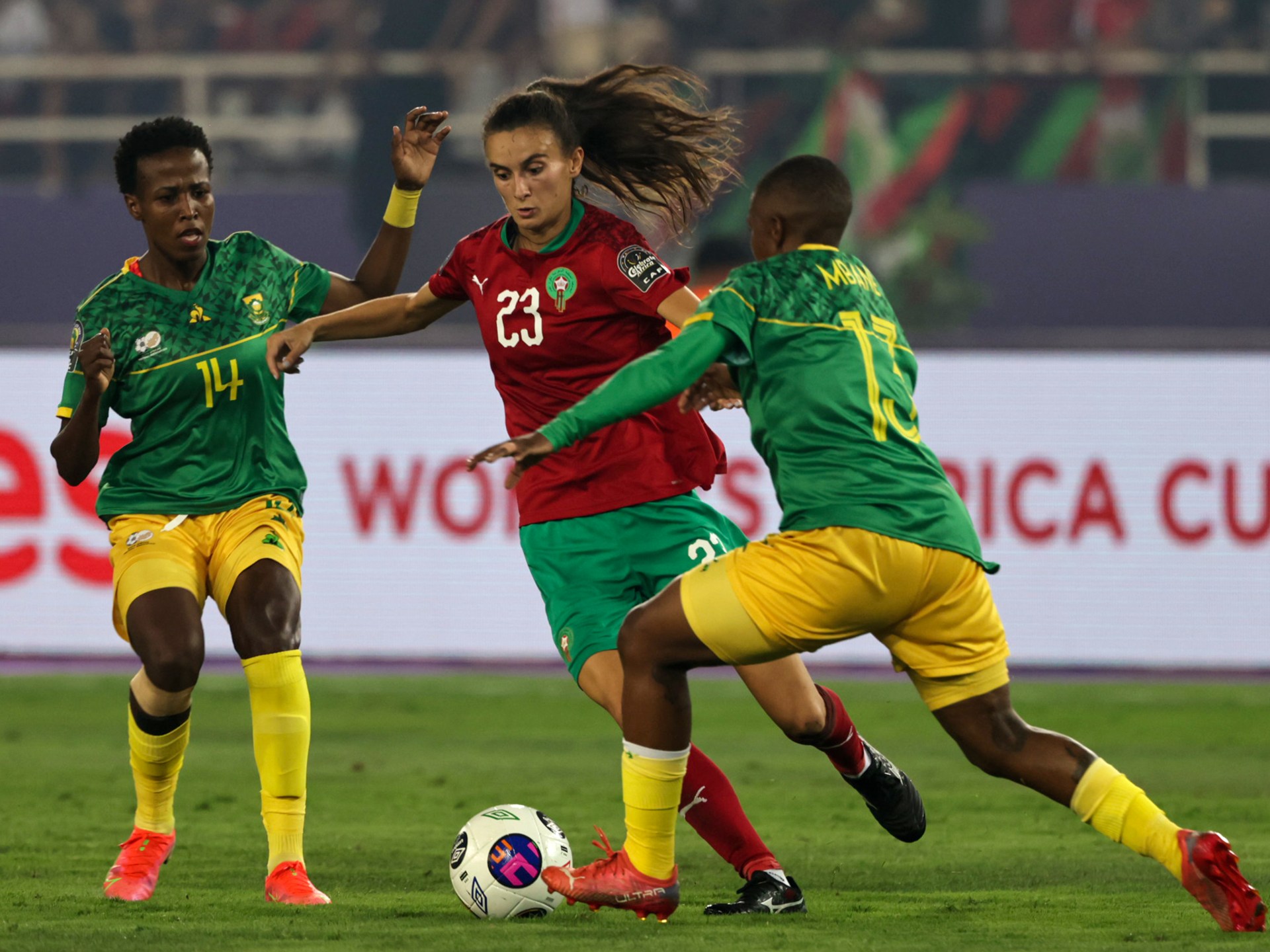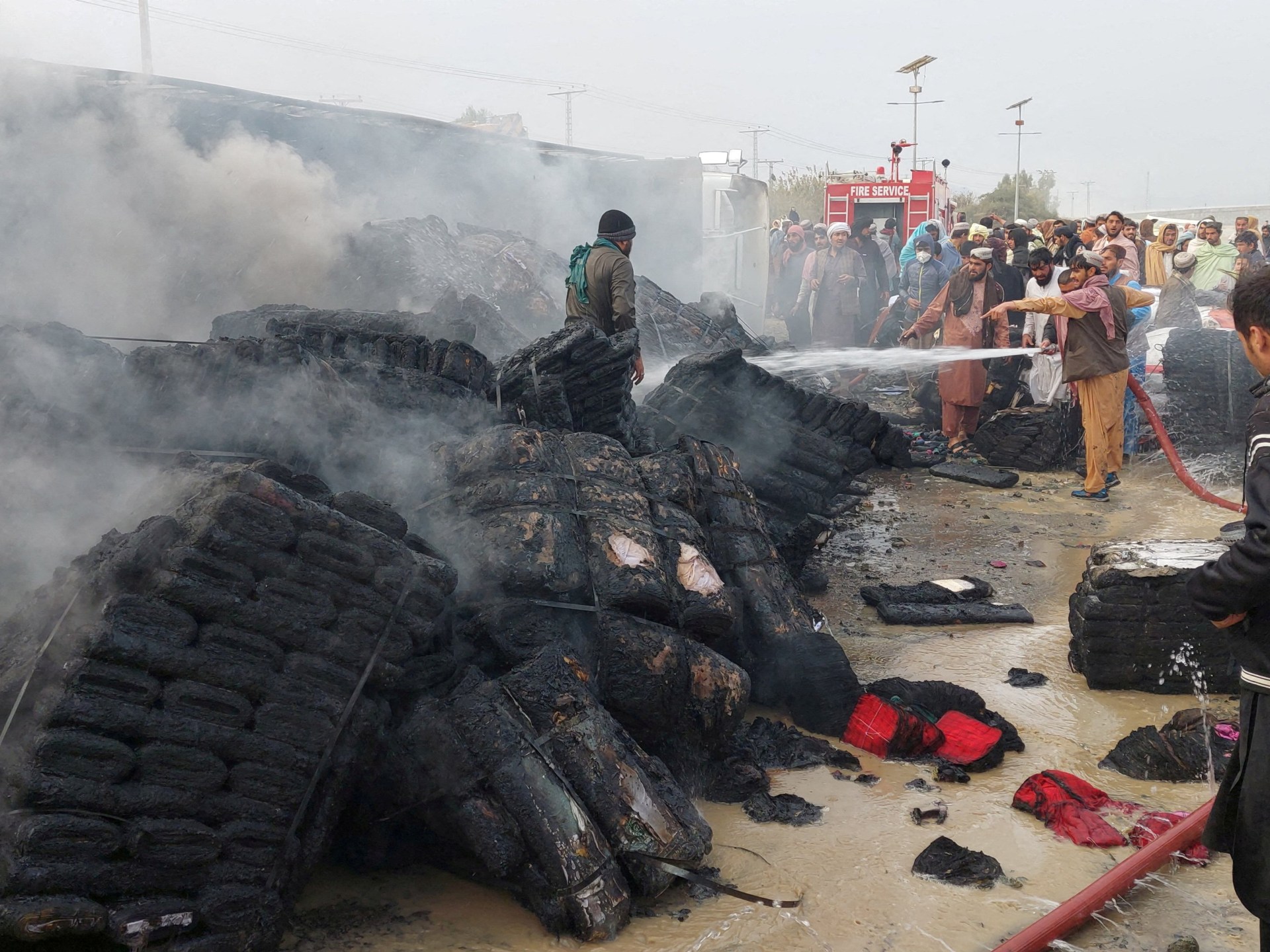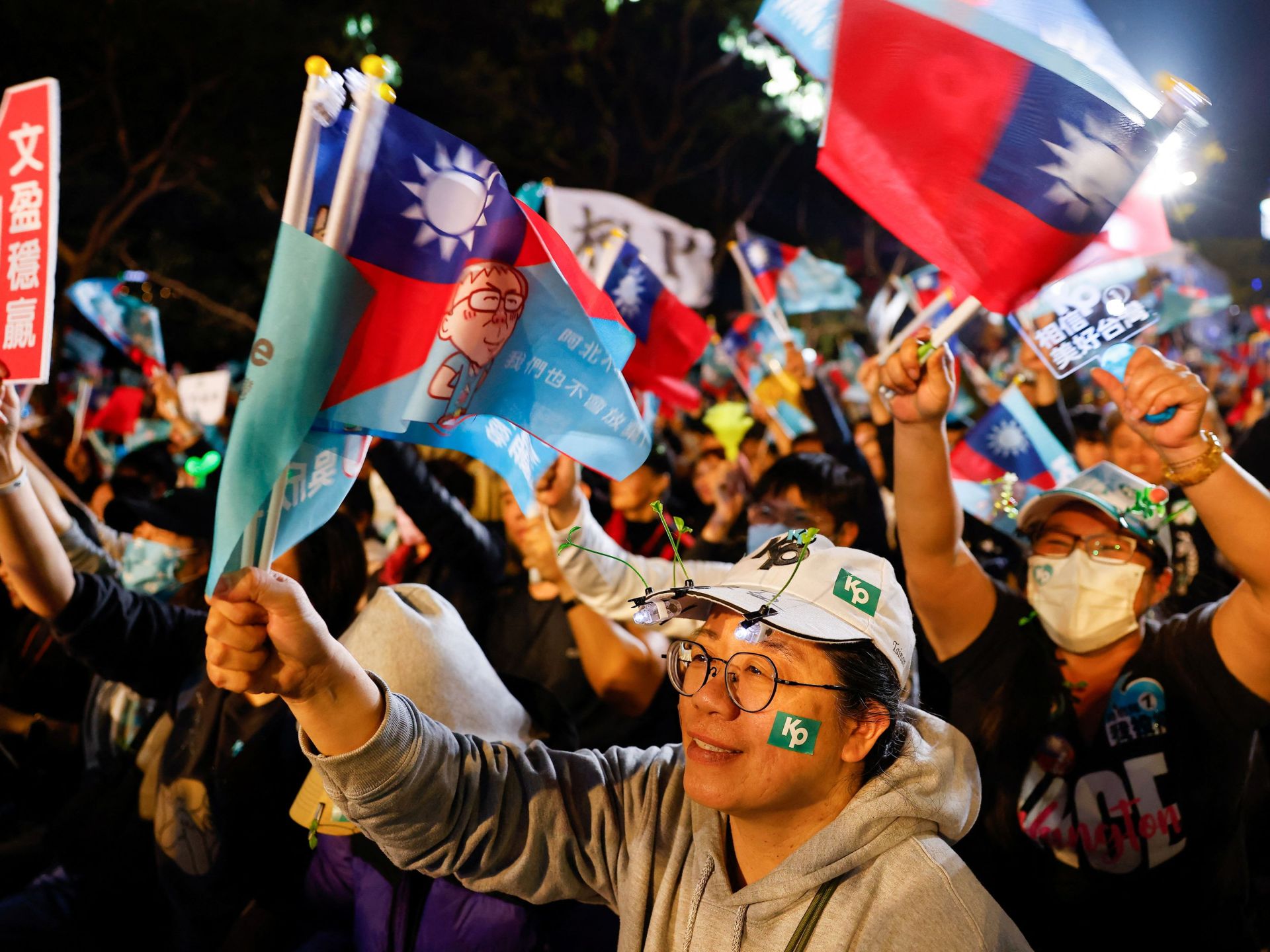Morocco set for Women’s World Cup debut after meteoric rise | Women’s World Cup
Imagine being the only person in a stadium unaware that your country just won the biggest game in its history. Now imagine also being the person who scored the goal to win that game.
Rosella Ayane doesn’t have to. When she scored in Morocco’s Women’s Africa Cup of Nations (WAFCON) semifinal penalty shootout against Nigeria last year, she calmly turned around and began trudging back to the halfway line to rejoin her teammates.
It wasn’t until those teammates mobbed her that she realised what she had done, and her confusion turned to joy.
“It was a bit of a blur, to be honest,” she said after the match. “I didn’t even know it was the winning penalty. I had no idea!”
That semifinal win was the culmination of the Atlas Lionesses’ meteoric rise that took them from the fringes of football in Africa to heading to their first World Cup in the space of a few years.
Just a few days after that win against Nigeria, more than 50,000 fans filled the Prince Moulay Abdallah Stadium in Rabat, and thousands more camped outside to try to watch the nation’s first appearance at a continental final since the men’s team reached the AFCON final 18 years previously.
And though the team fell short in a 2-1 loss to South Africa, it was a statement to the world that women’s football in Morocco was ready to rub shoulders with the best.
Now, with the success of the men’s team at the World Cup in Qatar – where they became the first African and Arab nation to reach the semifinals – and the Atlas Lionesses being the first Arab nation to qualify for a Women’s World Cup, the excitement in Morocco is building.
Humble beginnings
Twenty-five years before the 2022 WAFCON final, the nation was taking its first steps in women’s football.
Nawal El Moutawakel – who became the first Moroccan, African and Muslim woman to win an Olympic Gold medal at the Los Angeles Olympics in 1984 – had recently been appointed as the government’s Secretary of State to the Minister of Social Affairs, responsible for youth and sport, and she had big plans for women’s football in the country.
With her backing, the first-ever women’s team was formed in 1997, and Karim Bencharifa was appointed head coach.
“Of course, there were no leagues. It was just clubs that were amateur,” Bencharifa told Al Jazeera. “When we invited girls for trials, about 250 girls turned up.”
Bencharifa, who would also take charge of the Atlas Lionesses for a second spell from 2017 to 2019, had to whittle those 250 down to 23 before playing an exhibition match against a visiting team from Sweden.
“I wasn’t surprised by the turnout and support [at the WAFCON] because in 1997, the first game that we played [was an] exhibition match against the team from Sweden. We had about 40,000 in that same stadium of Rabat,” the now-head coach of Singapore recalls.
Bencharifa’s Morocco went on to qualify for a first-ever WAFCON in 1998, but the team would disappoint in back-to-back tournaments, failing to get out of the group stages in both 1998 and 2000 and losing to heavy hitters Nigeria 8-0 and 6-0.
With El Moutawakel leaving her post in 1998, support for the team dried up, and the Atlas Lionesses would take more than 20 years to reach the heights they have now scaled.
Morocco’s football revolution
Nearly two decades after its inception, women’s football in Morocco had made little progress.
While a league system had been established, there was no single national division and club football was dominated by AS FAR Rabat, the only men’s club that invested meaningfully in a women’s club.
The national side was made up almost entirely of AS FAR players and would only meet a couple of times a year to play in qualifiers they would inevitably lose.
But even as the team was at its lowest ebb, the seeds of change were already being planted to transform women’s football in the country.
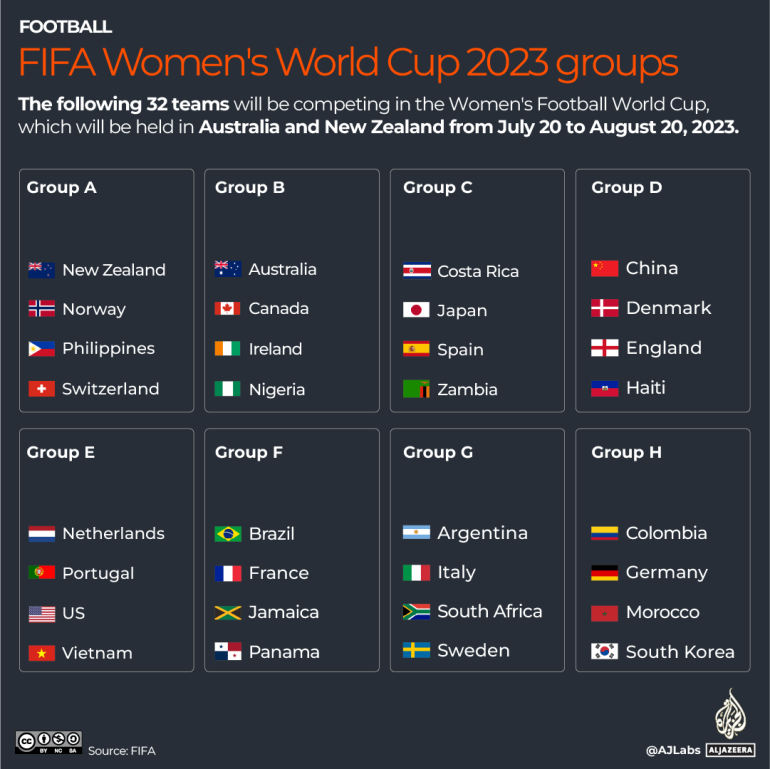
In 2014, a new president of the Royal Moroccan Football Federation (FRMF), Fouzi Lekjaa, was appointed with the government’s backing to transform football in the kingdom.
With the creation of the Mohammed VI Academy in 2009, and the development of an accompanying training complex under way, the infrastructure for developing Moroccan talent was well progressing, but at first, the focus was almost entirely on the men’s side of things.
“[Lekjaa] spent a lot of time just on the men’s side in 2014,” said Khadija Illa, at the time president of club AMFF Laayoune and now head of the women’s domestic league in Morocco. “I met him four times, and I would tell him, ‘Please care for the women’s football. After one year, please, Lekjaa, we need your help.’”
Lekjaa listened and in 2017 the Atlass Lionesses were reborn.
Bencharifa, 20 years after coaching the original team, was reappointed as head coach, taking charge of the team until 2019. A national U-20 and U-17 were formed alongside the senior team, and players from the wide-reaching Moroccan diaspora were approached to play for the kingdom.
In 2019, the federation launched a fully professional national football league and regional second tier. They committed to paying the salaries of 25 players per team and eight staff, including U-17 and U-15 coaches, for 42 clubs across the country, making Morocco the first country in the world to have two tiers of professional women’s football.

WAFCON and beyond
The final addition to the Atlas Lionesses and arguably the biggest sign of their ambition was the appointment of Reynald Pedros as head coach in 2020.
The former French international was famous as a player for missing the final penalty in Les Blues’ shootout loss to the Czech Republic at Euro 1996.
But he went on to become an elite coach in the women’s game and, in his previous job, took arguably the best European club in history, Olympique Lyonnais Feminin, to back-to-back Champions League titles.
With the Frenchman taking charge of the Atlas Lionesses and talented players like Rosella Ayane and Yasmin Mrabet brought in from the diaspora, Morocco entered the 2022 WAFCON with genuine ambitions to contend.
But for all the preparation, infrastructure and quality recruitment, the unexpected difference maker was the thousands of fans who turned out to every one of Morocco’s matches.
Multiple African attendance records were broken as fans turned out in droves, peaking in the final, where the official attendance stated that 54,000 fans were at the Prince Moulay Abdellah Stadium, but the real number was much higher as fans climbed fences and barricades to enter and watch their new heroes.
Despite the defeat in the final, the tournament’s success, both on and off the pitch, has propelled Moroccan women’s football further than ever before.
AS FAR Rabat followed up the tournament by winning their first-ever CAF Women’s Champions League. They exacted a certain amount of revenge by beating South African giants Mamelodi Sundowns in front of another bumper crowd in the same stadium where the national side lost to the South Africans.
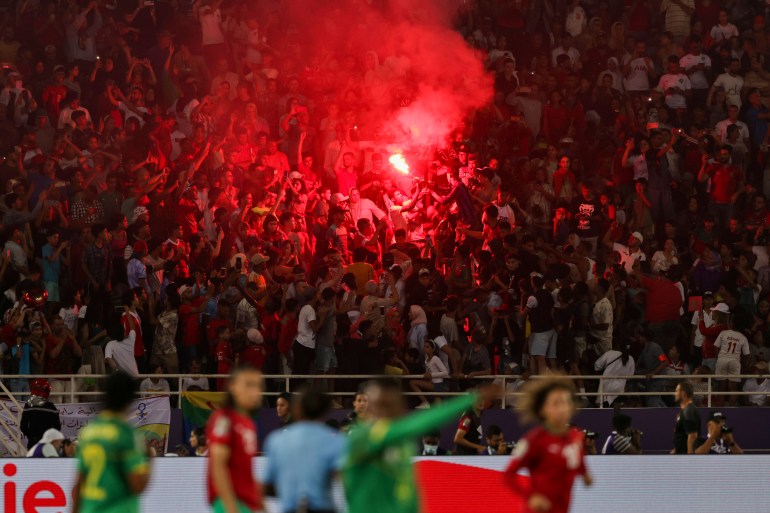
Even a short stroll in any major city will show the progress the team has made. Posters and billboards that were once plastered with faces like Achraf Hakimi and Hakim Ziyech now also feature stars like Ghizlane Chebbak and Fatima Tagnaout.
And the players are aware of their newfound prominence, Chebbak – whose father Larbi was a former African champion with the men’s team – is mobbed after every club match with AS FAR for photos and autographs by young boys and girls.
Nouhaila Benzina has become an icon not only in Morocco but across the whole Muslim world, as she will become the first player in history to wear a hijab at a World Cup.
“I don’t think there’s pressure, rather expectation and some hope,” Moroccan journalist Amine El Amri told Al Jazeera.
“People would be very happy if they get through the group stage, but fans are just happy that they’ve made it to the World Cup.”

